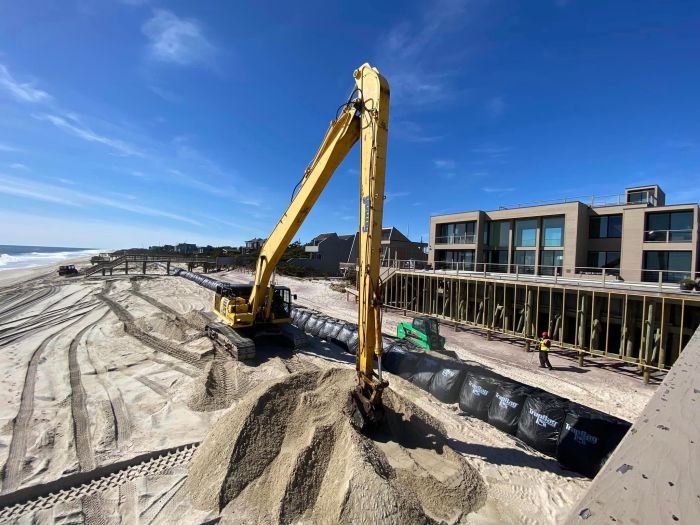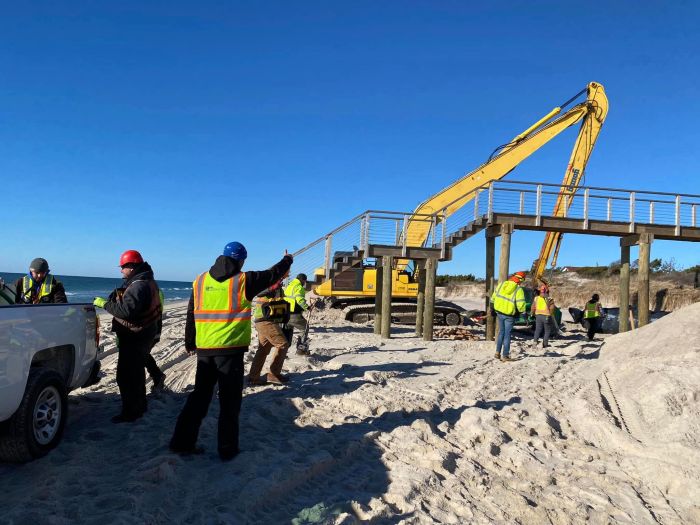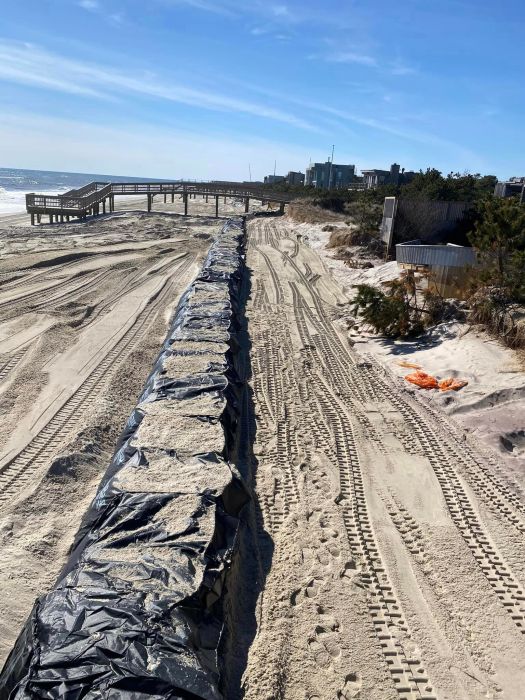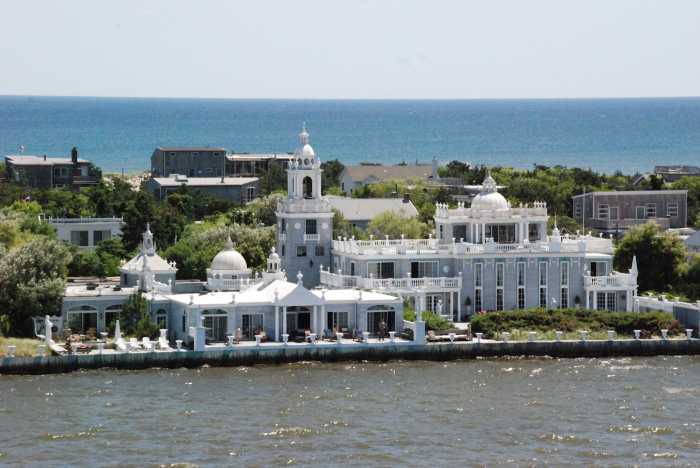Back-to-back winter storms scoured Fire Island beaches and caused widespread flooding, but also galvanized support for a new beach renourishment project that officials hope will start upon the conclusion of beach season.
The progress follows intense lobbying from local, New York State and federal officials to have the U.S. Army Corps of Engineers reconsider the agency’s initial objection to dredge more sand from the bottom of the Atlantic Ocean and pump it onto eroded beaches in the residential communities on the eastern end of the barrier island that falls in the Town of Brookhaven. Three storms in a week at one point this offseason helped punctuate the point for the project’s proponents.
“A year ago, we were caught in a seemingly unbreakable cycle of applications for help and rejections from the corps,” Henry Robin, president of the Fire Island Pines Homeowners Association, wrote in a letter to the community. “But once the agency dropped its opposition to the project following a months-long battle, our relationship changed. Over the past few months, we have become true partners.”
The effort comes about two years into the $1.7 billion Fire Island Inlet to Montauk Point project, known as FIMP, that had been planned for more than a half century and is now funded by the Sandy recovery package Congress enacted after the 2012 superstorm devastated the region. State and local governments plan to share the cost of future beach renourishment projects slated every four years for the next 30 years, pending an agreement that has yet to be finalized.
Federal contractors had already built berms and created man-made dunes on the western half of Fire Island’s residential communities before shipping off to perform similar work in Montauk, which also suffered storm-related flooding this winter. Then local officials began pushing for additional reinforcements from Seaview to Davis Park that endured oceanfront erosion in the years since the Fire Island Inlet to Moriches Inlet (FIMI) interim project was completed.
The Army Corps reversed course and declared that it would move forward with another project on Fire Island when the agency announced in February that it issued the first State Programmatic General Permit (NYSPGP-1). Besides fast tracking the approval process, the permit also opens the possibility of obtaining reimbursement for the project from the Federal Emergency Management Agency.
“This permit streamlines our response to severe weather, ensuring rapid rehabilitation of affected communities while maintaining environmental integrity,” said Col. Alex Young, commander of the USACE, New York District. “It represents our commitment to efficient, coordinated recovery efforts and reinforces our preparedness for future challenges, prioritizing the safety and resilience of New York’s infrastructure and its people.”
Robin and other local leaders continue to meet with stakeholders to ensure the plan stays on track. He and Andrew Kirtzman, who also serves on the FIPPOA, recently traveled to Washington D.C. with the leaders of the Fire Island Association and the Seaview Association to to meet with U.S. Senators Chuck Schumer and Kirsten Gillibrand, U.S. Rep. Andrew Garbarino (R-Sayville), and officials of the corps to discuss the latest details. Young recently visited the Pines as well, Robin added.
“The corps has yet to award a contract, and there are still some remaining moving pieces to be resolved,” he said. “But officials are increasingly discussing a late summer/early fall project launch.”
Not all are happy with the news. Environmentalists have questioned whether the beach renourishment work is a wise use of taxpayer funds given the increased pace of strong storms and sea-level rise resulting from climate change. Among the critics are Kevin McAllister of the Sag Harbor-based nonprofit Defend H2O, who pointed out that the Fire Island leg of the FIMP project has seen sand wash out to sea before.
Beach renourishment projects also run afoul a decades-old state law mandating strategic retreat from coastal erosion by, for example, fortifying urban areas such as lower Manhattan, but not endlessly pumping millions of dollars worth of sand onto the beach that gets washed away in an ensuing storm, critics say.
“With every coastal community up and down the Eastern Seaboard experiencing sea-level rise, federal sand dollars are in high demand and short supply,” McAllister said. “See the future, adapt to moving back.”
Robin, however, remains optimistic that the beach project will preserve his community’s way of life, and described Young as one of the Pines’ favorite people.
He told the News, “We are thrilled that they are coming and giving us the repair work that we needed.”































